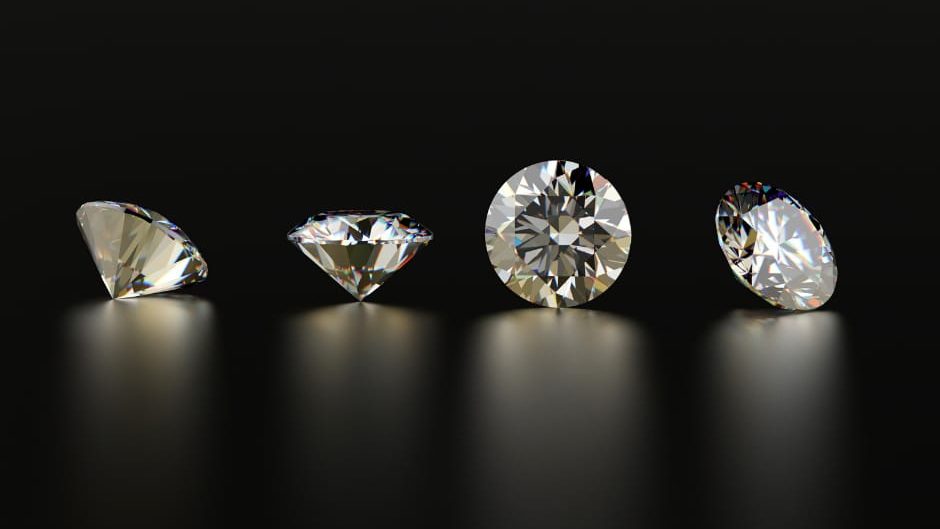For centuries, diamonds have been celebrated as enduring symbols of luxury, love, and commitment. From the crowns of monarchs to the heart-warming glow of engagement rings, these precious gems have captured human fascination with their extraordinary sparkle. Yet, the journey of a diamond from the earth to jewellery stores has often involved significant environmental and ethical challenges. In response to these concerns, lab-grown diamonds have emerged as a revolutionary alternative. They offer the same breath-taking beauty and symbolic value while ensuring a more sustainable and responsible approach to luxury. As we delve into the environmental advantages of lab-grown diamonds, it becomes clear that they are not only transforming the jewellery industry but also paving the way for a more sustainable future.

There are many similarities between lab grown & mined diamonds, Lab-grown diamonds and mined diamonds are composed of pure carbon atoms arranged in a crystal structure which ensures that both types of diamonds are equally durable. chemical composition ensures that lab-grown diamonds have the same clarity, colour, and quality potential as mined diamonds. Optically, both lab-grown and mined diamonds refract and disperse light in the same way. Both lab-grown and mined diamonds are graded using the same standards and criteria set by gemmological institute (the institutes who certified the global jewellery ) such as the Gemmological Institute of America (GIA) and the International Gemmological Institute (IGI). They are evaluated based on the four Cs: cut, colour, clarity, and carat weight, ensuring consistency in quality assessment. These all parameter’s reflects the similarities of lab grown & mined diamond’s.
The diamond market is experiencing a notable shift as consumers increasingly prioritize sustainability and ethical sourcing. This trend, particularly strong among Millennials and Gen Z, is driving the rising demand for lab-grown diamonds, which are projected to grow at over 22% annually for upcoming year’s. Also Lab-grown diamonds offer a compelling value proposition. They are typically 20-40% less expensive than their mined counterparts, making them an attractive option for budget-conscious consumers without sacrificing quality. This price advantage, combined with the growing emphasis on sustainability, makes lab-grown diamonds particularly appealing for engagement rings and other significant jewellery purchases.
Lab-grown diamonds have also opened up new possibilities in jewellery design. Jewellers can experiment with innovative cuts and designs that may not be feasible with mined diamonds. Additionally, the ability to customize and create unique pieces has resonated with consumers who seek personalized and distinctive jewellery. Sustainability is not just a trend but a significant selling point for lab-grown diamonds. Marketing campaigns increasingly highlight the environmental benefits, such as reduced carbon footprint, minimal water usage, and lack of mining-related destruction. This emphasis resonates with eco-conscious consumers who want their purchases to reflect their values.
This cost advantage, coupled with their lower environmental impact, appeals to budget-conscious and eco-conscious consumers alike. Transparency in production processes and detailed information about sustainability practices build trust and loyalty. Additionally, innovative designs and customization options further enhance their appeal. Celebrity endorsements and media influence also boost their popularity, solidifying lab-grown diamonds as a preferred choice for modern, responsible consumers.
The lab grown diamonds are directly impactful on reduction of the carbon footprints. The extraction and processing of mined diamonds require immense energy, often sourced from fossil fuels. Heavy machinery and extensive transportation contribute to high carbon emissions. For instance, the carbon footprint of producing a single carat of mined diamond can be as high as 57,000 grams of CO2. In contrast, lab-grown diamonds are created in controlled environments using methods like Chemical Vapor Deposition (CVD) or High-Pressure High Temperature (HPHT). These processes, particularly when powered by renewable energy sources, significantly reduce carbon emissions. On average, the carbon footprint of producing a single carat of lab-grown diamond can be as low as 6,000 grams of CO2, making them a far eco-friendlier choice.
Mined Diamonds made by multiple Mining operations, it disrupts large tracts of land, leading to deforestation, soil erosion, and habitat destruction. Additionally, mining consumes vast quantities of water, often in regions already suffering from water scarcity. For example, producing one carat of diamond can disturb up to 100 square feet of land and use approximately 480 litters of water. Mining activities can result in significant environmental degradation, including pollution of water bodies with chemicals like cyanide and mercury. These pollutants can have long-lasting effects on local wildlife and human communities. Moreover, the creation of open-pit mines and the dumping of tailings disrupt local ecosystems and contribute to long-term environmental damage.
Whereas Lab-Grown Diamonds require minimal land use since they are produced in laboratories. The water usage in their production is also considerably lower, primarily limited to cooling systems. This reduction in resource consumption translates into a lesser environmental burden and helps preserve natural ecosystems. The controlled production of lab-grown diamonds virtually eliminates the risk of chemical pollution and environmental degradation associated with mining. As the process is contained within a laboratory setting, it avoids the ecological harm typically caused by open-pit mines and tailings.
Lab-grown diamonds offer a sustainable alternative with reduced carbon emissions, minimal environmental impact, and ethical production practices. Choosing these gems supports a future where luxury aligns with environmental responsibility, making a positive impact on our planet.
Written By Ansh C Vachhani | Edited by Souberi Chakrabarty



